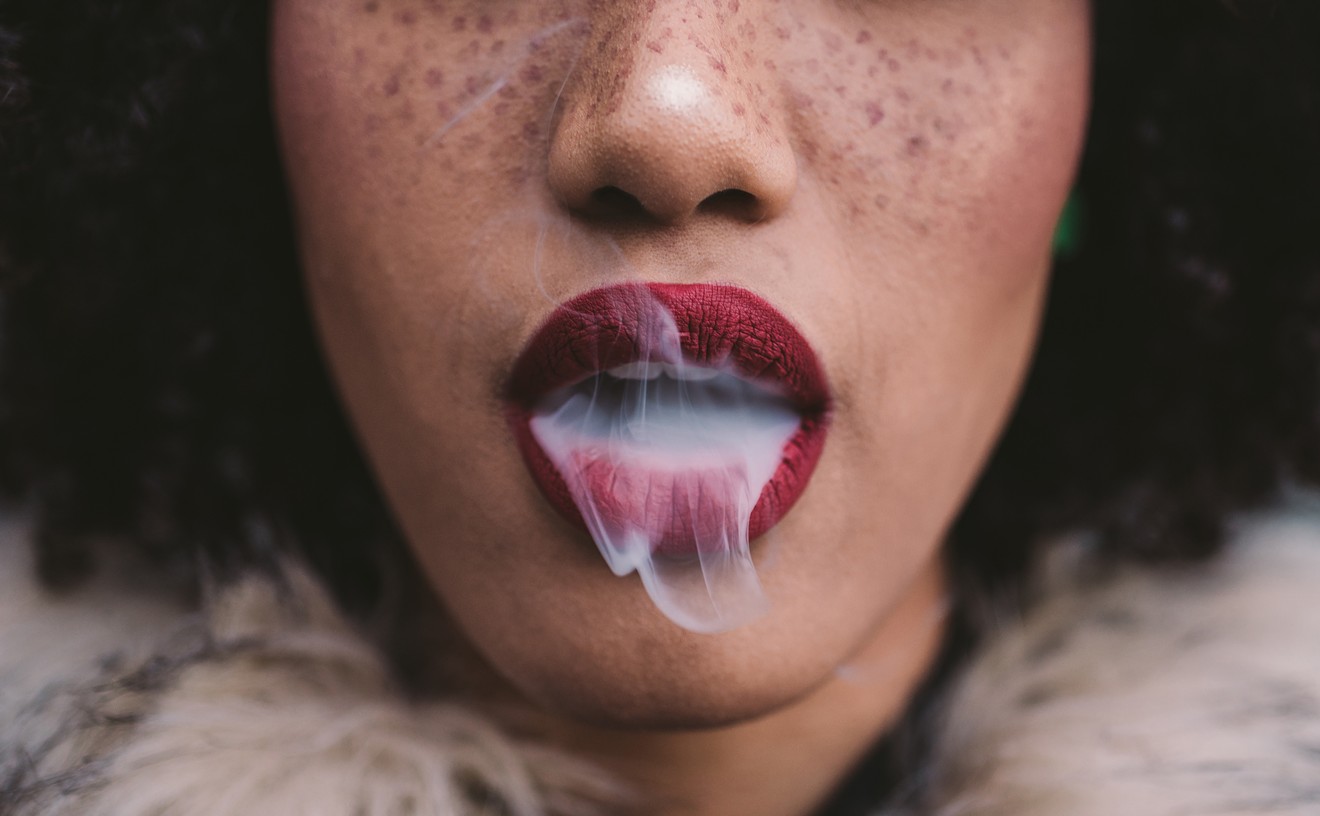Erwin Redl's "Fade IV," a grid of light-emitting diodes (LEDs) hanging at Conduit Gallery, operates somewhere within this spectrum. Occupying neither pole, manifesting neither ruthless efficiency nor gaga spiritualism, Redl's latticed scrim of tiny red lights hanging adjacent to the wall seems to evaporate while maintaining its presence before you. As dictated by computer, the lights subtly dim and lighten in a five- to seven-second loop. The effect is more ambient than actual, especially as the slight tweaking of brightness brings on faint sensations of vertigo and disorientation. That the space is best experienced with no one around, in the quiescence of privacy, tells you something essential about the work. Redl's network of lights is as much an exercise in beautiful composition as it is in the effects of the body interacting with light emanating in space. In keeping with the logic of the grid underscored by Krauss, it is both abstract and material. While this is work about the sensate body roving through space, it is an unsocial corpus--the sensuous human acting not in the crowd of a tough city but alone in a fragile abyss.
Though a rare event, the creation of light-art is nothing new. It goes back to the 18th century, to the "luminism" of Father Louis Bertrand Castel's light organ. Castel wowed onlookers in 1734 with his five-octave harpsichord keyboard that shot colored light through transparent tape by way of the flicker of candlelight below. In our own time, the 1960s minimalist fluorescent-bulb sculpture of Dan Flavin might come to mind. The correlation between Flavin and Redl's work is obvious if not wholly accurate, as the Viennese artist Redl is opening a show in London at Bloomberg Space that will run in conjunction with the Flavin retrospective in the city at Hayward Gallery. Another precedent for Redl's work is the Light and Space artists of the 1960s who, unlike Flavin, hail from the opposite coast of California. Like Light and Space artists, of whom the most internationally recognized are Robert Irwin, James Turrell and Bruce Nauman, Redl is concerned with the perceptual experience of light in space. The LED installation here in Dallas creates an architecture that is at once static and labile, structural yet changeful. One enters the space to find what appears from afar to be a free-floating constellation of red lights. Upon closer scrutiny, the illumination hangs on a delicate and intricate architecture of gridded wire tautly hanging from ceiling to floor. Redl's object works as both thing and effect. It is an understated network of LEDs suspended upright like a painting in front of you. It is also a hazy pink atmosphere in a dark room and glossy pond-top reflection of lights in the floor underfoot.
One might feel compelled to fault Redl for what, on first blush, seems to be simply a preoccupation with the formal possibilities of lights floating in space. This is especially the case when compared to the Japanese artist Tatsuo Miyajima, who also works with LEDs. Owned by the Modern Art Museum of Fort Worth, Miyajima's "Time in Blue" (1996) is 61 blue LED numerical counters mounted on a black wooden panel. The lit numbers flicker and change sporadically, suggesting the incessant flux of life. Miyajima encapsulates the complexities of life's changes digitally, both in number and electronic technology. Miyajima's work might be considered more conceptually rich than Redl's, since it is inflected by a sense of number-driven chaos. Ultimately we really shouldn't fault Redl's work for its absence of conceptualist hairiness and Duchamp's winking duplicity. Redl's references are different. His "Fade IV" reflects a phenomenology (a loaded 50-cent word for "philosophical experience") of the body maneuvering through space.
If the grid is an overt presence in the work of Redl, it is but a pale residue of one-point perspective in the paintings of Fahamu Pecou. Hanging in the adjacent room of the gallery where one enters is a small but visually boisterous collection of Pecou's work titled Fahamu Pecou Is the Shit. Pecou's paintings are a raucous but tidy dismissal of the institutional politics of the art world. Five large paintings of ersatz magazine covers hang on the walls. Each shows the otherwise unassuming artist in pimped-out garb slouching like 50 Cent or styling like P. Diddy. In Pecou's painted replication of the cover of International Review of African American Art, the artist stands with the brown phallus of a cigar drooping from his mouth. He paints himself on a cover of Flash Art leaning against a hip and phat Benz.
Pecou reconstructs an art world with himself, a rising young African-American painter, front and center. He creates an overt politics of inversion and intrusion, sneakily thwarting and taking ownership of a system of political connections, exclusion and sometime whimsical success. Pecou's cosmos is more self-fulfilling prophecy than fantastic suggestion. He is going to be in our face in the magazines because he's already made faux versions of such magazine covers. The images of the artist as a success exist and will make his success a palpable thing. The in-your-face politics of these would-be magazine covers is further heated by the complicated process behind the work. Pecou begins with the theatrical set-up of the image. He strikes a rapper pose alongside hired actors. A professional photographer captures the image, and then Pecou scans or downloads it onto his desktop in order to manipulate it graphically, adding ghetto accolades such as "dat boy is gud." He projects the image on the wall, sketches and paints it, allowing the paint of the figures and words to bleed and drip as a means to "show that it is painting," as he puts it.
While this is an odd coupling of work at Conduit Gallery, this is one of the strongest shows the gallery has had in the last two years. Politics of painting and race play out in the front room while an elegant indecision of matter and spirit wavers and whispers in the back.










